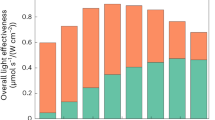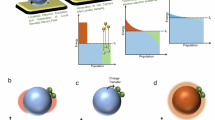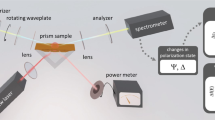Abstract
Light-induced catalysis and thermoplasmonics are promising fields creating many opportunities for innovative research. Recent advances in light-induced olefin metathesis have led to new applications in polymer and material science, but further improvements to reaction scope and efficiency are desired. Herein, we present the activation of latent ruthenium-based olefin metathesis catalysts via the photothermal response of plasmonic gold nanobipyramids. Simple synthetic control over gold nanobipyramid size results in tunable localized surface plasmon resonance bands enabling catalyst initiation with low-energy visible and infrared light. This approach was applied to the ROMP of dicyclopentadiene, affording plasmonic polymer composites with exceptional photoresponsive and mechanical properties. Moreover, this method of catalyst activation was proven to be remarkably more efficient than activation through conventional heating in all the metathesis processes tested. This study paves the way for providing a wide range of photoinduced olefin metathesis processes in particular and photoinduced latent organic reactions in general by direct photothermal activation of thermally latent catalysts.

This is a preview of subscription content, access via your institution
Access options
Access Nature and 54 other Nature Portfolio journals
Get Nature+, our best-value online-access subscription
$32.99 / 30 days
cancel any time
Subscribe to this journal
Receive 12 print issues and online access
$259.00 per year
only $21.58 per issue
Buy this article
- Purchase on SpringerLink
- Instant access to full article PDF
Prices may be subject to local taxes which are calculated during checkout




Similar content being viewed by others
Data availability
All data supporting this study can be found within the paper and the Supplementary Information and Videos. Source data are provided with this paper.
References
Jauffred, L., Samadi, A., Klingberg, H., Bendix, P. M. & Oddershede, L. B. Plasmonic heating of nanostructures. Chem. Rev. 119, 8087–8130 (2019).
Boyer, D., Tamarat, P., Maali, A., Lounis, B. & Orrit, M. Photothermal imaging of nanometer-sized metal particles among scatterers. Science 297, 1160–1163 (2002).
Saha, K., Agasti, S. S., Kim, C., Li, X. & Rotello, V. M. Gold nanoparticles in chemical and biological sensing. Chem. Rev. 112, 2739–2779 (2012).
Li, S. et al. Recent advances in plasmonic nanostructures for enhanced photocatalysis and electrocatalysis. Adv. Mater. 33, 2000086 (2021).
O’Neal, D. P., Hirsch, L. R., Halas, N. J., Payne, J. D. & West, J. L. Photo-thermal tumor ablation in mice using near infrared-absorbing nanoparticles. Cancer Lett. 209, 171–176 (2004).
Shukla, R. et al. Biocompatibility of gold nanoparticles and their endocytotic fate inside the cellular compartment: a microscopic overview. Langmuir 21, 10644–10654 (2005).
Zheng, J. et al. Gold nanorods: the most versatile plasmonic nanoparticles. Chem. Rev. 121, 13342–13453 (2021).
Jiang, R., Cheng, S., Shao, L., Ruan, Q. & Wang, J. Mass-based photothermal comparison among gold nanocrystals, PbS nanocrystals, organic dyes, and carbon black. J. Phys. Chem. C 117, 8909–8915 (2013).
Li, N., Zhao, P. & Astruc, D. Anisotropic gold nanoparticles: synthesis, properties, applications, and toxicity. Angew. Chem. Int. Ed. 53, 1756–1789 (2014).
Sánchez-Iglesias, A. et al. High-yield seeded growth of monodisperse pentatwinned gold nanoparticles through thermally induced seed twinning. J. Am. Chem. Soc. 139, 107–110 (2017).
Liu, M., Guyot-Sionnest, P., Lee, T.-W. & Gray, S. K. Optical properties of rodlike and bipyramidal gold nanoparticles from three-dimensional computations. Phys. Rev. B 76, 235428 (2007).
Chow, T. H. et al. Gold nanobipyramids: an emerging and versatile type of plasmonic nanoparticles. Acc. Chem. Res. 52, 2136–2146 (2019).
Yougbaré, S. et al. Facet-dependent gold nanocrystals for effective photothermal killing of bacteria. J. Hazard. Mater. 407, 124617 (2021).
Zhu, X. et al. Selective Pd deposition on Au nanobipyramids and Pd site-dependent plasmonic photocatalytic activity. Adv. Func. Mater. 27, 1700016 (2017).
Lee, J.-H. et al. Plasmonic photothermal gold bipyramid nanoreactors for ultrafast real-time bioassays. J. Am. Chem. Soc. 139, 8054–8057 (2017).
Eivgi, O., Phatake, R. S., Nechmad, N. B. & Lemcoff, N. G. Light-activated olefin metathesis: catalyst development, synthesis, and applications. Acc. Chem. Res. 53, 2456–2471 (2020).
Eivgi, O. & Lemcoff, N. G. Turning the light on: recent developments in photoinduced olefin metathesis. Synthesis 50, 49–63 (2018).
Vidavsky, Y. & Lemcoff, N. G. Light-induced olefin metathesis. Beilstein J. Org. Chem. 6, 1106–1119 (2010).
Harvey, F. M. & Bochet, C. G. Photochemical methods in metathesis reactions. Org. Biomol. Chem. 18, 8034–8057 (2020).
Levin, E., Mavila, S., Eivgi, O., Tzur, E. & Lemcoff, N. G. Regioselective chromatic orthogonality with light-activated metathesis catalysts. Angew. Chem. Int. Ed. 54, 12384–12388 (2015).
Sutar, R. L. et al. Guiding a divergent reaction by photochemical control: bichromatic selective access to levulinates and butenolides. Chem. Sci. 9, 1368–1374 (2018).
Eivgi, O., Sutar, R. L., Reany, O. & Lemcoff, N. G. Bichromatic photosynthesis of coumarins by UV filter-enabled olefin metathesis. Adv. Synth. Catal. 359, 2352–2357 (2017).
Sutar, R. L. et al. A light-activated olefin metathesis catalyst equipped with a chromatic orthogonal self-destruct function. Angew. Chem. Int. Ed. 55, 764–767 (2016).
Eivgi, O., Vaisman, A., Nechmad, N. B., Baranov, M. & Lemcoff, N. G. Latent ruthenium benzylidene phosphite complexes for visible-light-induced olefin metathesis. ACS Catal. 10, 2033–2038 (2020).
Stawiasz, K. J., Paul, J. E., Schwarz, K. J., Sottos, N. R. & Moore, J. S. Photoexcitation of Grubbs’ second-generation catalyst initiates frontal ring-opening metathesis polymerization. ACS Macro Lett. 9, 1563–1568 (2020).
Dean, L. M., Ravindra, A., Guo, A. X., Yourdkhani, M. & Sottos, N. R. Photothermal initiation of frontal polymerization using carbon nanoparticles. ACS Appl. Polym. Mater. 2, 4690–4696 (2020).
Ivry, E. et al. Light- and thermal-activated olefin metathesis of hindered substrates. Organometallics 37, 176–181 (2018).
Segalovich-Gerendash, G. et al. Imposing latency in ruthenium sulfoxide-chelated benzylidenes: expanding opportunities for thermal and photoactivation in olefin metathesis. ACS Catal. 10, 4827–4834 (2020).
Nechmad, N. B. et al. Reactivity and selectivity in ruthenium sulfur-chelated diiodo catalysts. Angew. Chem. Int. Ed. 60, 6372–6376 (2021).
Eivgi, O. et al. Photoactivation of ruthenium phosphite complexes for olefin metathesis. ACS Catal. 8, 6413–6418 (2018).
Eivgi, O., Vaisman, A. & Lemcoff, N. G. Latent, yet highly active photoswitchable olefin metathesis precatalysts bearing cyclic alkyl amino carbene (CAAC)/phosphite ligands. ACS Catal. 11, 703–709 (2021).
Theunissen, C., Ashley, M. A. & Rovis, T. Visible-light-controlled ruthenium-catalyzed olefin metathesis. J. Am. Chem. Soc. 141, 6791–6796 (2019).
Trinh, T. K. H. et al. Combining a ligand photogenerator and a Ru precatalyst: a photoinduced approach to cross-linked ROMP polymer films. RSC Adv. 9, 27789–27799 (2019).
Pinaud, J. et al. In situ generated ruthenium–arene catalyst for photoactivated ring-opening metathesis polymerization through photolatent N-heterocyclic carbene ligand. Chem. Eur. J. 24, 337–341 (2018).
Khalimon, A. Y., Leitao, E. M. & Piers, W. E. Photogeneration of a phosphonium alkylidene olefin metathesis catalyst. Organometallics 31, 5634–5637 (2012).
Keitz, B. K. & Grubbs, R. H. A tandem approach to photoactivated olefin metathesis: combining a photoacid generator with an acid activated catalyst. J. Am. Chem. Soc. 131, 2038–2039 (2009).
Bantreil, X., Schmid, T. E., Randall, R. A. M., Slawin, A. M. Z. & Cazin, C. S. J. Mixed N-heterocyclic carbene/phosphite ruthenium complexes: towards a new generation of olefin metathesis catalysts. Chem. Comm. 46, 7115–7117 (2010).
Guidone, S., Songis, O., Nahra, F. & Cazin, C. S. J. Conducting olefin metathesis reactions in air: breaking the paradigm. ACS Catal. 5, 2697–2701 (2015).
Fasciani, C., Alejo, C. J. B., Grenier, M., Netto-Ferreira, J. C. & Scaiano, J. C. High-temperature organic reactions at room temperature using plasmon excitation: decomposition of dicumyl peroxide. Org. Lett. 13, 204–207 (2011).
Qiu, J. et al. Surface plasmon mediated chemical solution deposition of gold nanoparticles on a nanostructured silver surface at room temperature. J. Am. Chem. Soc. 135, 38–41 (2013).
Baffou, G., Polleux, J., Rigneault, H. & Monneret, S. Super-heating and micro-bubble generation around plasmonic nanoparticles under cw illumination. J. Phys. Chem. C 118, 4890–4898 (2014).
Baffou, G., Cichos, F. & Quidant, R. Applications and challenges of thermoplasmonics. Nat. Mater. 19, 946–958 (2020).
Butilkov, D., Frenklah, A., Rozenberg, I., Kozuch, S. & Lemcoff, N. G. Highly selective olefin metathesis with CAAC-containing ruthenium benzylidenes. ACS Catal. 7, 7634–7637 (2017).
Butilkov, D. & Lemcoff, N. G. Jojoba oil olefin metathesis: a valuable source for bio-renewable materials. Green Chem. 16, 4728–4733 (2014).
Fedoruk, M., Meixner, M., Carretero-Palacios, S., Lohmüller, T. & Feldmann, J. Nanolithography by plasmonic heating and optical manipulation of gold nanoparticles. ACS Nano 7, 7648–7653 (2013).
Asmussen, S. V., Arenas, G. F. & Vallo, C. I. Enhanced degree of polymerization of methacrylate and epoxy resins by plasmonic heating of embedded silver nanoparticles. Prog. Org. Coat. 88, 220–227 (2015).
Bukovinszky, K. et al. Optimization of plasmonic gold nanoparticle concentration in green LED light active dental photopolymer. Polymers 13, 275 (2021).
Pastoriza-Santos, I., Kinnear, C., Pérez-Juste, J., Mulvaney, P. & Liz-Marzán, L. M. Plasmonic polymer nanocomposites. Nat. Rev. Mater. 3, 375–391 (2018).
Fang, C., Shao, L., Zhao, Y., Wang, J. & Wu, H. A gold nanocrystal/poly(dimethylsiloxane) composite for plasmonic heating on microfluidic chips. Adv. Mater. 24, 94–98 (2012).
Kovačič, S. & Slugovc, C. Ring-opening metathesis polymerisation derived poly(dicyclopentadiene) based materials. Mater. Chem. Front. 4, 2235–2255 (2020).
Phatake, R. S., Masarwa, A., Lemcoff, N. G. & Reany, O. Tuning thermal properties of cross-linked DCPD polymers by functionalization, initiator type and curing methods. Polym. Chem. 11, 1742–1751 (2020).
Saha, S. et al. Cross-linked ROMP polymers based on odourless dicyclopentadiene derivatives. Polym. Chem. 7, 3071–3075 (2016).
Monsaert, S., Vila, A. L., Drozdzak, R., Der Voort, P. V. & Verpoort, F. Latent olefin metathesis catalysts. Chem. Soc. Rev. 38, 3360–3372 (2009).
Wang, W. et al. Size-dependent longitudinal plasmon resonance wavelength and extraordinary scattering properties of Au nano bipyramids. Nanotechnology 29, 355402 (2018).
Campu, A., Craciun, A. M., Focsan, M. & Astilean, S. Assessment of the photothermal conversion efficiencies of tunable gold bipyramids under irradiation by two laser lines in a NIR biological window. Nanotechnology 30, 405701 (2019).
Steese, N. D. et al. Synthesis and thermal properties of linear polydicyclopentadiene via ring-opening metathesis polymerization with a third generation grubbs-type ruthenium-alkylidene complex. J. Polym. Sci. A Polym. Chem. 56, 359–364 (2018).
Baffou, G. & Quidant, R. Nanoplasmonics for chemistry. Chem. Soc. Rev. 43, 3898–3907 (2014).
Zhang, W. et al. Latent catalyst-containing naphthoxazine: synthesis and effects on ring-opening polymerization. Macromolecules 49, 7129–7140 (2016).
Lochab, B. et al. Review on the accelerated and low‐temperature polymerization of benzoxazine resins: addition polymerizable sustainable polymers. Polymers 13, 1260 (2021).
Nagyházi, M. et al. Catalytic decomposition of long-chain olefins to propylene via isomerization-metathesis using latent bicyclic (alkyl)(amino)carbene-ruthenium olefin metathesis catalysts. Angew. Chem. Int. Ed. 61, e202204413 (2022).
Acknowledgements
We thank T. Lemcoff for editing all Supplementary Videos. We thank E. Nativ-Roth for taking all SEM images. We thank R. Schneck and Y. Unigovski for carrying out the tensile strength measurements. This work was supported by the Zuckerman STEM Leadership Program and the Israel Science Foundation (ISF) grant no. 2491/20 to Y.W., and ISF grant no. 506/18 to N.G.L. The funders had no role in study design, data collection and analysis, decision to publish or preparation of the manuscript.
Author information
Authors and Affiliations
Contributions
Y.W. and N.G.L. supervised the project. N.L., N.B.N. and O.E. conducted all experiments. E.Y., N.L. and O.S. set up the LED temperature regulation system. N.L., O.S., A.B. and D.Y. synthesized the nanoparticles. N.L., N.B.N., A.V. and O.E. synthesized all catalysts. R.S.P. and N.B.N. conducted the mechanical analysis experiments. N.L., O.E., N.G.L. and Y.W. wrote the manuscript.
Corresponding author
Ethics declarations
Competing interests
The authors declare no competing interests.
Peer review
Peer review information
Nature Chemistry thanks Jianfang Wang and the other, anonymous, reviewer(s) for their contribution to the peer review of this work.
Additional information
Publisher’s note Springer Nature remains neutral with regard to jurisdictional claims in published maps and institutional affiliations.
Supplementary information
Supplementary Information
Supplementary Figs. 1–81 and Tables 1–7.
Supplementary Video 1
Side-by-side videos of a PPC850 film (20 OD) being irradiated with an 850 nm LED (100 W). On the left is the normal recording. On the right is the thermal camera (Flir One) recording, including its temperature reading.
Supplementary Video 2
Preparation process of photoresponsive PPC660 (20 OD) coil. Initially, the ‘soft’ polymer was shaped. After the shaping was complete, photothermal curing was achieved by irradiating with a 660 nm LED (200 W). Finally, the coil’s toughness was demonstrated.
Supplementary Video 3
Preparation process of photoresponsive PPC850 (20 OD) knot. Initially, the ‘soft’ polymer was shaped into a knot. It was then irradiated with an 850 nm LED (100 W) until photothermal curing was complete. Finally, the knot’s toughness was demonstrated; one can clearly see that cured sections are rigid, and non-cured sections are flexible.
Supplementary Video 4
Side-by-side video of a funnel blocked by the photoresponsive jojoba-derived wax (embedded with AuBP850 at 10 OD). The funnel was filled with water and then irradiated with an 850 nm LED (100 W). The wax’s photothermal response caused its melting, and the water was spilled. This simple demonstration hints at potential applications for materials of this type.
Source data
Source Data Fig. 1
Underlying raw data of Fig. 1b,c.
Source Data Fig. 3
Underlying raw data of Fig. 3c,d.
Source Data Fig. 4
Underlying raw data of Fig. 4a,b.
Rights and permissions
Springer Nature or its licensor (e.g. a society or other partner) holds exclusive rights to this article under a publishing agreement with the author(s) or other rightsholder(s); author self-archiving of the accepted manuscript version of this article is solely governed by the terms of such publishing agreement and applicable law.
About this article
Cite this article
Lemcoff, N., Nechmad, N.B., Eivgi, O. et al. Plasmonic visible–near infrared photothermal activation of olefin metathesis enabling photoresponsive materials. Nat. Chem. 15, 475–482 (2023). https://doi.org/10.1038/s41557-022-01124-7
Received:
Accepted:
Published:
Issue Date:
DOI: https://doi.org/10.1038/s41557-022-01124-7
This article is cited by
-
Molecular light-to-heat conversion promotes orthogonal synthesis and assembly of metal-organic frameworks
Nature Communications (2025)
-
Transition-metal-free isofunctional reaction of α,β-unsaturated ketones/nitriles
Science China Chemistry (2025)
-
The paradox of thermal vs. non-thermal effects in plasmonic photocatalysis
Nature Communications (2024)
-
Light-induced MOF synthesis enabling composite photothermal materials
Nature Communications (2024)
-
Lighting up hot stuff
Nature Chemistry (2023)



